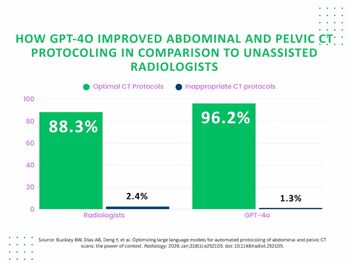
Could an Emerging PSMA/PET Imaging Agent Improve the Detection of Recurrent Prostate Cancer?
In a recent video interview from the American Society for Radiation Oncology (ASTRO) Annual Meeting, Benjamin Lowentritt, MD discussed the challenges of conventional imaging in diagnosing prostate cancer recurrence and the potential of an emerging high affinity, radiohybrid prostate-specific membrane antigen/positron emission tomography (PSMA/PET) imaging agent.
Traditional imaging has limitations in the early detection of prostate cancer recurrence. Bone scintigraphy, computed axial tomography (CAT) and magnetic resonance imaging (MRI) “often are unable to detect small recurrences when they would be more responsive to salvage therapy,” noted Benjamin Lowentritt, M.D., in a recent video interview from the American Society for Radiation Oncology (ASTRO) Annual Meeting.
However, Dr. Lowentritt, the director of the Prostate Cancer Care Program at Chesapeake Urology, said the emergence of prostate-specific membrane antigen/positron emission tomography (PSMA/PET) imaging agents over the past year and a half has “truly transformed care” as they have allowed improved staging and detection of recurrent prostate cancer, facilitating more targeted use of therapies.
As a co-author on the phase III multicenter SPOTLIGHT trial, Dr. Lowentritt said the study findings demonstrated that the emerging PSMA/PET agent 18F-rhPSMA-7.3 (Blue Earth Diagnostics/Bracco Imaging) was a “strong performer across a variety of different clinical factors” in the detection of prostate cancer recurrence. According to the study of 389 patients, 18F-rhPSMA-7.3 had an overall majority read detection rate of 83 percent.
(Editor's note: For related articles, see "
While emphasizing that there are currently no comparative trials of PSMA/PET imaging agents for detecting prostate cancer recurrence, Dr. Lowentritt said a possible advantage of 18F-rhPSMA-7.3 is the agent’s potential for less urinary excretion.
“We know this is a disease that often recurs in the pelvis so having a cleaner looking pelvis we would hope might allow this (agent) to have possibly a better ability to detect disease and more definitively detect disease in the pelvis,” added Dr. Lowentritt, president of the MidAtlantic Region of the American Urological Association.
For more insights from Dr. Lowentritt, watch the video below.
Newsletter
Stay at the forefront of radiology with the Diagnostic Imaging newsletter, delivering the latest news, clinical insights, and imaging advancements for today’s radiologists.




























